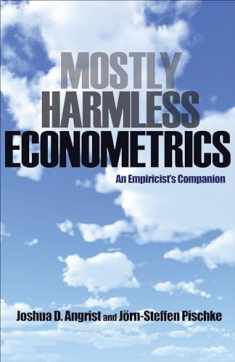
Microeconometrics: Methods and Applications
Book details
Summary
Description
This book provides the most comprehensive treatment to date of microeconometrics, the analysis of individual-level data on the economic behavior of individuals or firms using regression methods for cross section and panel data. The book is oriented to the practitioner. A basic understanding of the linear regression model with matrix algebra is assumed. The text can be used for a microeconometrics course, typically a second-year economics PhD course; for data-oriented applied microeconometrics field courses; and as a reference work for graduate students and applied researchers who wish to fill in gaps in their toolkit. Distinguishing features of the book include emphasis on nonlinear models and robust inference, simulation-based estimation, and problems of complex survey data. The book makes frequent use of numerical examples based on generated data to illustrate the key models and methods. More substantially, it systematically integrates into the text empirical illustrations based on seven large and exceptionally rich data sets.


We would LOVE it if you could help us and other readers by reviewing the book
Book review




